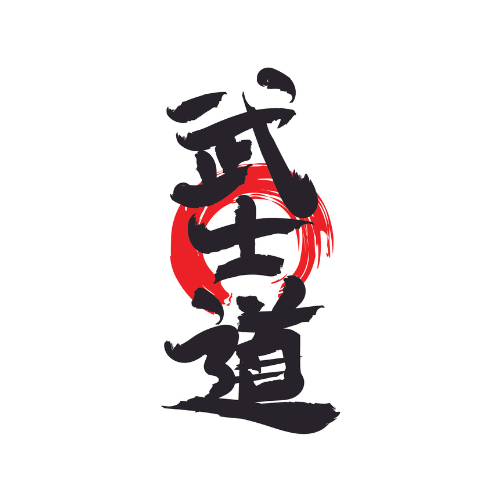Bushido Wado-Ryu Karate Club

BUSHIDO
bushi·do
bushi: warrior
do: the way of
noun: the warrior way – embodying
the ‘indomitable spirit’ cultivated
by practising the martial arts
WADO-RYU
wa·do·ryu
wa: peace/harmony
do: the way of
ryu: school/style of
KARATE
kara·te
kara: empty
te: hand
Why train with us?
We are a family-friendly club, training adults and children aged 3 and up.
We have a dedicated juniors class, our Little Ninjas, where children from Reception to Year 3 can start their martial arts journey. Here, we emphasise character development, including developing resilience, determination and self-control.
We welcome all students who respect others and are willing to work hard to achieve their goals. We have found that neurodivergent and dyspraxic children and adults, as well as people suffering from anxiety, low self-confidence or self-esteem can particularly benefit from martial arts training.
Lead Instructor Sensei Ben Mills is a 3rd Dan (Sandan) in Wado-Ryu Karate. He is a fully DBS-cleared, first-aid and safeguarding-trained, British Martial Arts & Boxing Association-accredited martial arts instructor, as well as a schoolteacher with 30 years of teaching experience.
Ben is passionate about sharing the wide-ranging benefits of training in the martial arts with his students and he invests heavily in their personal growth and helping them achieve their training goals.
Founded in 2012 by Sensei Laziz Rakhmatov (pictured left), the club was taken on by Sensei Ben on Laziz’s return to his native Uzbekistan in 2017. where he now runs his own International School. They remain close friends.
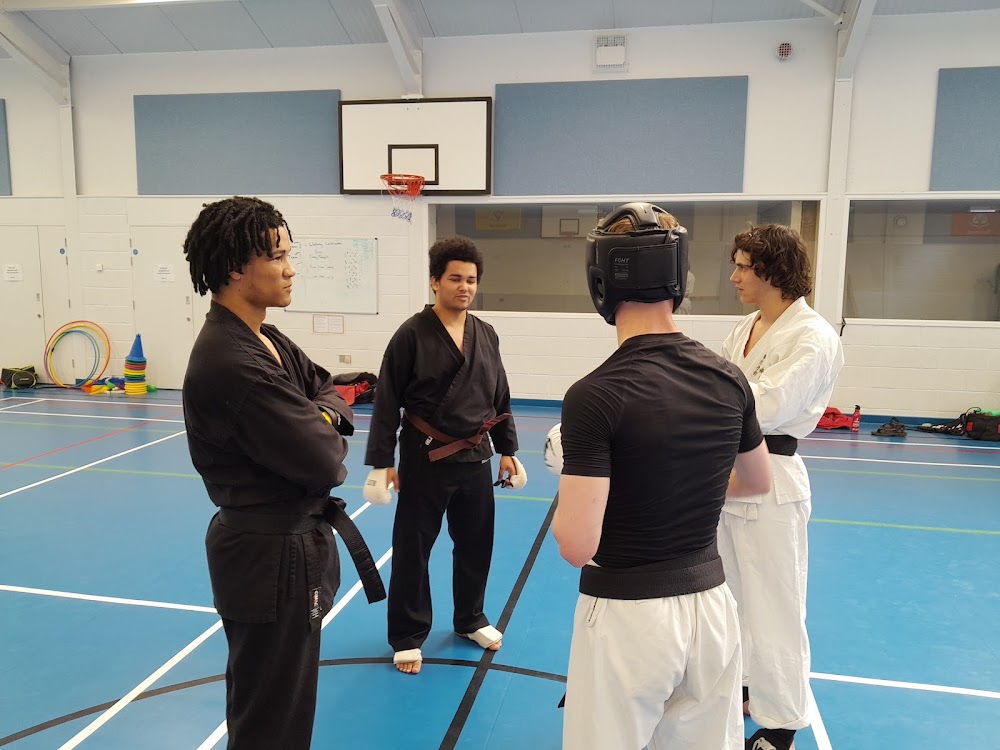
Why learn karate?
There are many reasons why people first come through the dojo door to train – your initial motivation may be learning self-defence, you may want to get fit, meet new people, increase your self-confidence, or you may be drawn to the sense of peace and connection to self which learning and performing katas can bring (katas or ‘forms’ are sometimes referred to as ‘meditation in motion’).
Whatever attracts you initially, you will soon experience benefits on so many levels – mental, physical and spiritual, since karate promotes mindfulness, self-confidence, physical wellbeing and gives its practitioners (known as ‘karatekas’), a sense of inner calm, feeling ‘centred’ and energized for life.
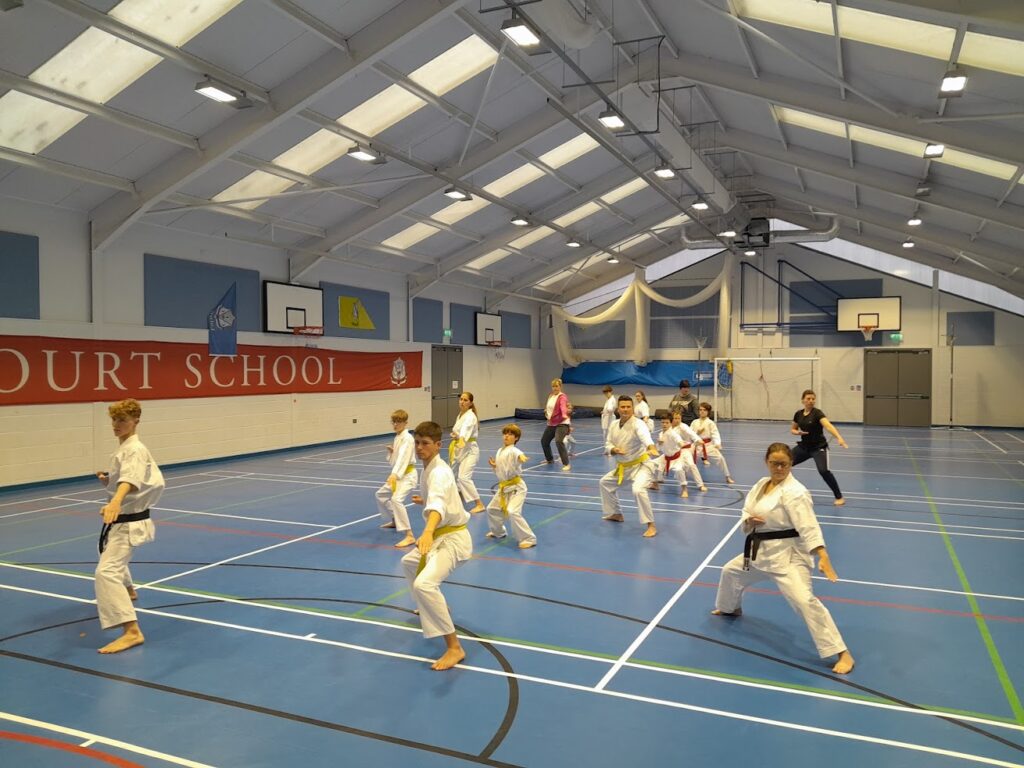
Traditional karate
Traditional karate incorporates long-range kicks and hand-strikes, as well as close-quarter techniques, including knee- and elbow-strikes. However, karate is about so much more than just self-defence: it develops coordination and fitness, as well as confidence, resilience and other aspects of good mental-health, such as mindfulness, helping to reduce anxiety and manage stress.
The three traditional pillars of karate are the three Ks: kata, kihon and kumite.
Kata, sometimes known as ‘forms’ are sequences of moves to learn, like a moving encyclopedia of techniques. Kata has been described as ‘meditation in motion’: learning and performing katas is a very mindful as well as physically demanding experience. It often brings a feeling of inner stillness and calm, much like the calm at the centre of a storm.
Kihon means ‘basics’ or ‘fundamentals’ – these are the key techniques, such as blocks, strikes, kicks and stances to practise and learn for each belt level. The discipline and focus required to master these techniques can gives the practitioner a template to apply in every other area of endeavour in their lives.
Kumite is sparring – controlled ‘fighting’, usually done ‘light and fast’, to avoid injury and allow both parties to make mistakes safely, whilst developing their attack, defence and counterattack techniques.
We take time to make sure students understand the important differences between sparring, fighting and self-defence.
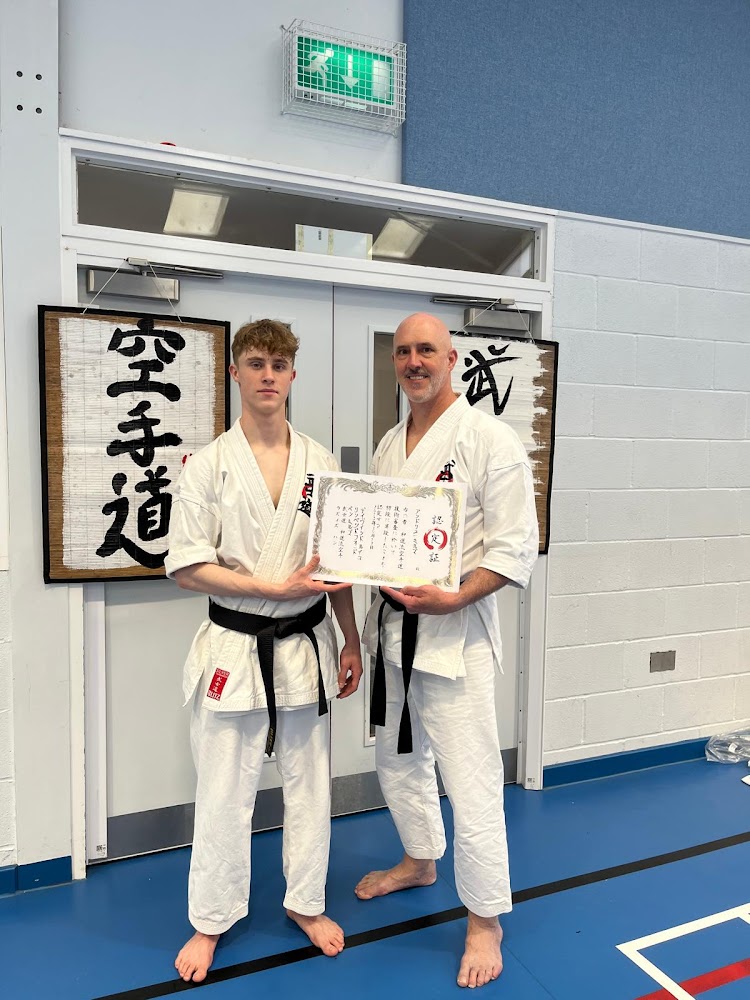
The karatedo - the karate way
The karate journey through the belt ranks takes students through the ‘Kyus’ (numbered in reverse from 10th to 1st) up to the ‘Dan’ black belt levels. This journey is not just a physically and mentally challenging one, demanding discipline, grit, courage and determination, it is also a spiritual one. Students forge a greater connection to their inner self and sense of what they are capable of. In the process, a deeper respect for the world around us and those we share it with emerges.
So, although we are learning a practical martial art, as a student advances through the grades he or she learns not only how to execute effective techniques with highly effective speed and power, but importantly, as their skill level increases, they also learn to deal with violence and aggression and how to resolve conflict with minimal force and damage to others.
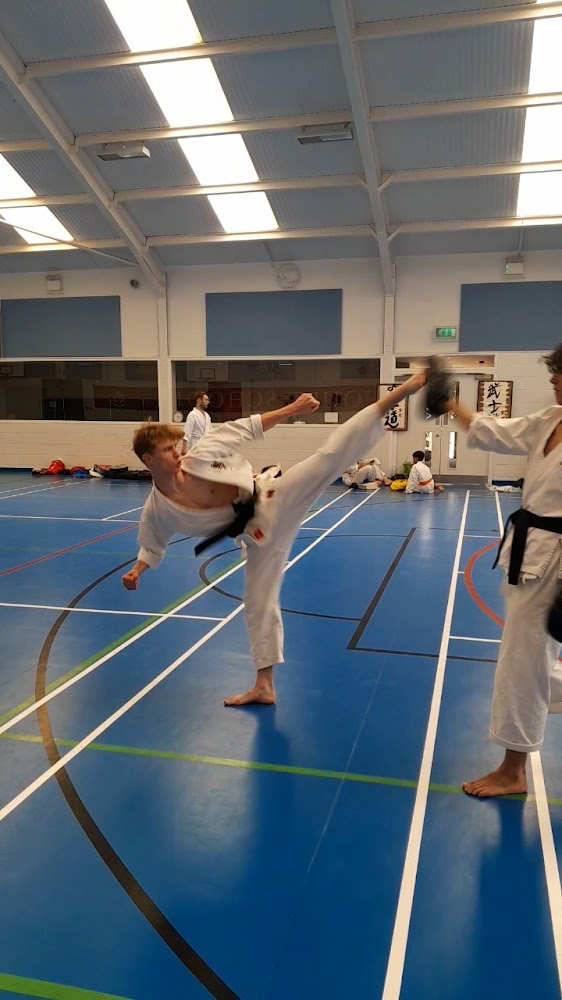
Karate-jutsu & the karate-do: self-protection & self-perfection
‘Karate-jutsu’ is the original karate, which was and is about self-protection, with a focus on effective, potentially brutal, techniques to defeat an attacker.
As karate modernised and spread, the ‘karate-do’ (the karate way) focused on practising the art in a peaceful way, with more of a focus on striving for self-perfection.
Both of these aspects of karate demand focus and attention to detail, with wide-ranging benefits to the student: self-defence skills, should they ever be needed, and a template for effective personal growth.
Parents very often report increased focus, confidence and resilience in their children, and they often tell us that their teachers have noticed these changes, along with improved levels of concentration in class.
Adult students often report feeling that they want to do everything better, with increased energy levels and new-found levels of confidence and self-belief.
